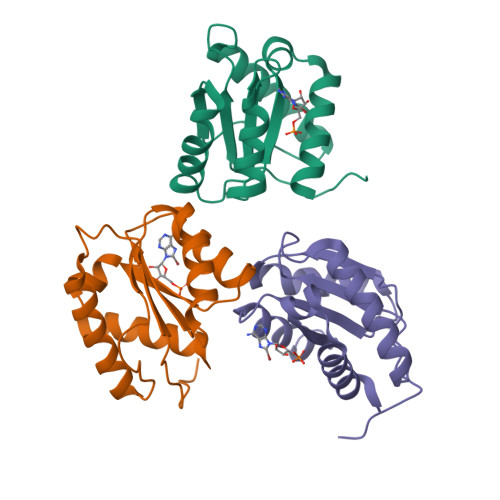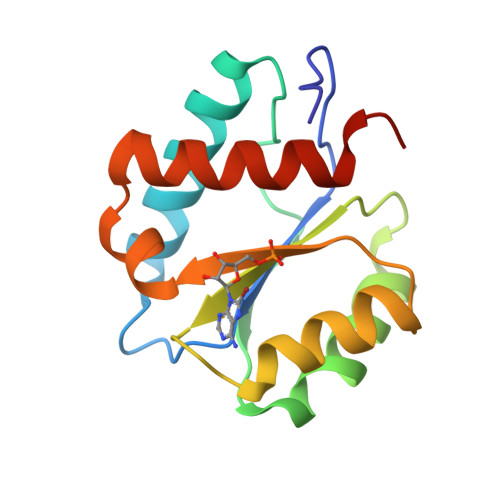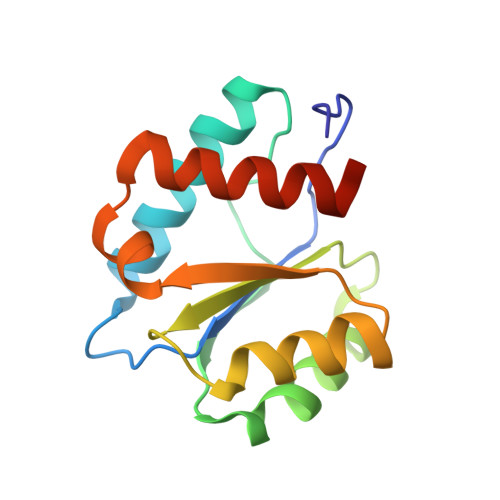siRNA potency enhancement via chemical modifications of nucleotide bases at the 5'-end of the siRNA guide strand.
Shinohara, F., Oashi, T., Harumoto, T., Nishikawa, T., Takayama, Y., Miyagi, H., Takahashi, Y., Nakajima, T., Sawada, T., Koda, Y., Makino, A., Sato, A., Hamaguchi, K., Suzuki, M., Yamamoto, J., Tomari, Y., Saito, J.I.(2021) RNA 27: 163-173
- PubMed: 33177188
- DOI: https://doi.org/10.1261/rna.073783.119
- Primary Citation of Related Structures:
7C6B, 7D7U - PubMed Abstract:
Small interfering RNAs (siRNAs) can be utilized not only as functional biological research tools but also as therapeutic agents. For the clinical use of siRNA as drugs, various chemical modifications have been used to improve the activity of siRNA drugs, and further chemical modifications are expected to improve the utility of siRNA therapeutics. As the 5' nucleobase of the guide strand affects the interaction between an siRNA and AGO2 and target cleavage activity, structural optimization of this specific position may be a useful strategy for improving siRNA activity. Here, using the in silico model of the complex between human AGO2 MID domain and nucleoside monophosphates, we screened and synthesized an original adenine-derived analog, 6-(3-(2-carboxyethyl)phenyl)purine (6-mCEPh-purine), that fits better than the natural nucleotide bases into the MID domain of AGO2. Introduction of the 6-mCEPh-purine analog at the 5'-end of the siRNA guide strand significantly enhanced target knockdown activity in both cultured cell lines and in vivo animal models. Our findings can help expand strategies for rationally optimizing siRNA activity via chemical modifications of nucleotide bases.
Organizational Affiliation:
Research Function Unit, R&D Division, Kyowa Kirin Co. Ltd., Chiyoda-ku, Tokyo 100-0004, Japan.





















